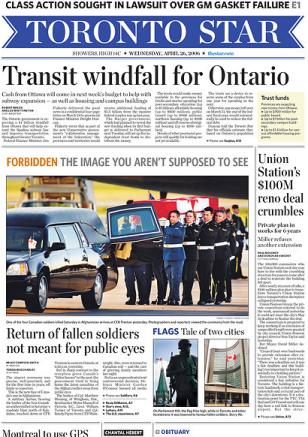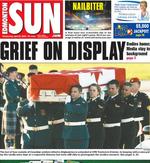Today, the Conservative government announced that they will continue the process of setting up a full inquiry into the most heinous act of terrorism committed against Canadians in our history: the bombing that destroyed Air India Flight 182 in 1985.
The bombing killed 329 people and the prosecution against those alleged to have committed the bombing was grossly mishandled. Indeed, crossed wires at the RCMP and CSIS contributed to the bureaucratic fumbling of the case and the key suspects were acquitted causing significant uproar among most Canadians.
Early last month, the Prime Minister met with the families of the victims of the Air India attack and promised to launch an inquiry into the incident. With today’s announcement, it appears that the PM has delivered on his word. Canada will finally seek to determine the security failures prior to and after the bombing, 21 years later.
Unfortunately, after 21 years of previous government, all that could be mustered was an inquiry into whether an inquiry should take place (the answer was yes). Now, of course, I don’t pretend to be an expert, but the incident was the most significant terrorist attack against Canadians in the history of this nation. Further, our federal security bureaucracy couldn’t communicate effectively leaving us with an inadequate level of national security?
This issue while fundamentally important on a public policy scale, also will demonstrate that the new Conservative government is working on one of its five priorities and is delivering to Canadians. On January 23rd, Canadians voted for safer communities and security at home and abroad and this announcement today will certainly show that the Prime Minister is delivering on his promises. Hopefully, the inquiry will provide understanding, if not closure, for the families of the victims.
Retired Supreme Court Justice John Major will chair this long awaited and necessary inquiry.
Here is the full text of the verdicts against Ripudaman Singh Malik and Ajaib Singh Bagri whom were acquitted of a litany of charges.
This Court found Mr. Bagri’s rights under s. 7 of the Charter to have been violated on three separate occasions. The first two breaches arose from the destruction by CSIS of relevant material, namely, the Parmar telephone intercepts and Mr. Laurie’s notes and audiotapes of his interviews of Ms. E. The third breach was occasioned by delayed Crown disclosure during the defence case. Mr. Bagri was granted certain interim remedies and the parties agreed to defer the final determination of appropriate s. 24 remedies until the conclusion of trial so that the prejudice to Mr. Bagri’s fair trial interests could be assessed in light of the full evidentiary record. The parties made comprehensive closing submissions with respect to both the applicable test of prejudice and the appropriateness of various remedies to address any such prejudice. In light of the outcome of the case against Mr. Bagri, however, it is not necessary to consider these matters.
Considering the evidence as a whole, I find that the Crown has not proved its case against Mr. Bagri beyond a reasonable doubt with respect to his being a member of the alleged conspiracy or a party to the alleged offences and, accordingly, I find him not guilty on each count of the Indictment.
I began by describing the horrific nature of these cruel acts of terrorism, acts which cry out for justice. Justice is not achieved, however, if persons are convicted on anything less than the requisite standard of proof beyond a reasonable doubt. Despite what appear to have been the best and most earnest of efforts by the police and the Crown, the evidence has fallen markedly short of that standard.
Bob Rae’s report is available as a PDF (350KB) and includes this concluding statement:
A few days before completing this report I was visited by a family member who left me a smiling photograph of an 11 year old girl, his sister, KiranJit Rai. She was killed on Air India Flight 182. He also showed me the letters his parents had received from her classmates at King George Public School. They speak of a young girl full of fun, intelligent, beautiful. They wanted to let her parents know that “the whole school is crying”. I have that picture on my desk to remind me what this has been all about.
KiranJit and 330 others were murdered by people living in Canada. They may have been assisted by people from other countries, but this is a profoundly Canadian event. Some of its perpetrators have been apprehended or killed; others are still at large. A twenty-year police investigation continues, and our search for answers, and for justice, can never stop. The inquiry I am recommending will not provide “closure” for the families or for anyone else. But it should provide us with further insight and better practices. — Bob Rae

